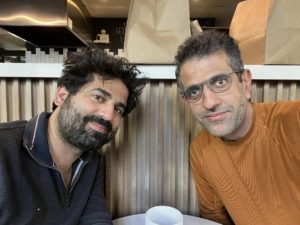
Zack & I met in real life for the first time (in Cambridge USA) on the 10th of October even though we have known each for nearly two decades.
Dr. V is an Eric & Wendy Schmidt postdoctoral fellow at the Broad Institute of MIT & Harvard so she’s relocated to the United States (as of this month) and we’re now going to be doing trans-Atlantic hops between Old & New Cambridge, with of course Chennai in the mix.
Since Brown Pundits seems a bit moribund these days; I thought I’d share this update here. I don’t look my best as it was the end of Phase 1 of moving (I’d just returned the rental car after a fortnight and went off to meet Zack).